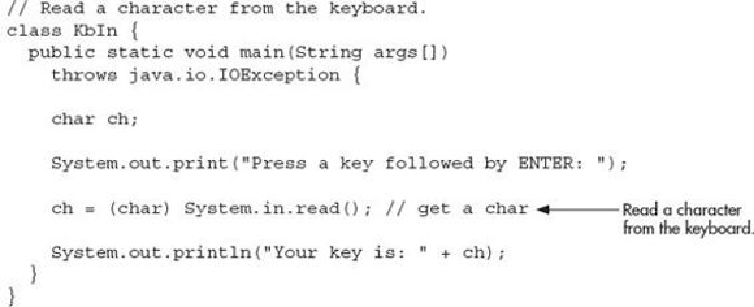Java Reference
In-Depth Information
Here is a sample run:
In the program, notice that
main( )
begins like this:
Because
System.in.read( )
is being used, the program must specify the
throws
java.io.IOException
clause. This line is necessary to handle input errors. It is part of Java's
about its precise meaning.
The fact that
System.in
is line buffered is a source of annoyance at times. When you
press
ENTER
, a carriage return, line feed sequence is entered into the input stream. Further-
more, these characters are left pending in the input buffer until you read them. Thus, for
some applications, you may need to remove them (by reading them) before the next input
operation. You will see an example of this later in this chapter.
The if Statement
Chapter 1
introduced the
if
statement. It is examined in detail here. The complete form of
the
if
statement is
if(
condition
)
statement
;
else
statement;



